Discover the world through its flavors with our list of 10 unique dishes from around the globe that you must try. This curated selection features a variety of culinary delights, from exotic street foods to traditional favorites, offering a taste of different cultures and cuisines. Perfect for adventurous food lovers and curious travelers, these dishes promise unforgettable flavors and experiences. Embark on this delicious journey and explore the diverse, rich culinary traditions that make each dish a must-try for anyone seeking new and exciting tastes.
Table of Contents
1: Fugu (Japon)
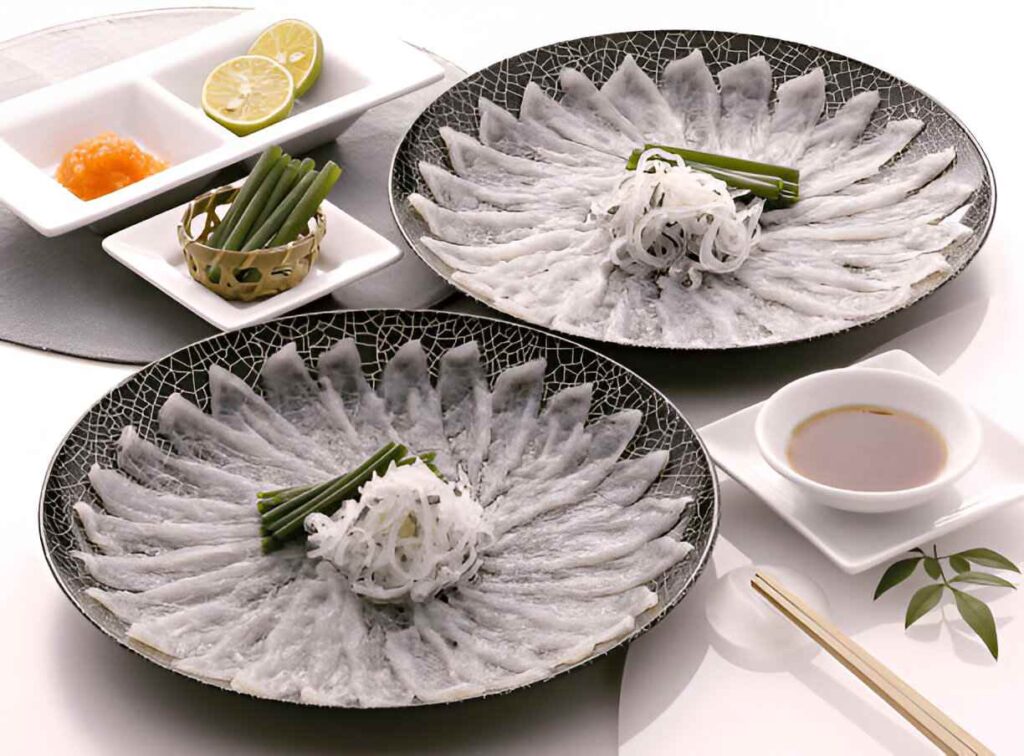
Fugu, or pufferfish, is one of Japan’s most notorious delicacies, revered for its delicate flavor and infamous for its deadly potential. Only highly trained and licensed chefs can prepare this dish, meticulously removing the toxic parts. The thrill of eating fugu lies in knowing its danger, with a slight tingling sensation often experienced when consumed. Traditionally served as thin sashimi slices or in a hot pot, fugu is considered a luxurious and adventurous choice, appealing to diners seeking a unique and potentially life-risking culinary experience.
2: Hakarl (Iceland)
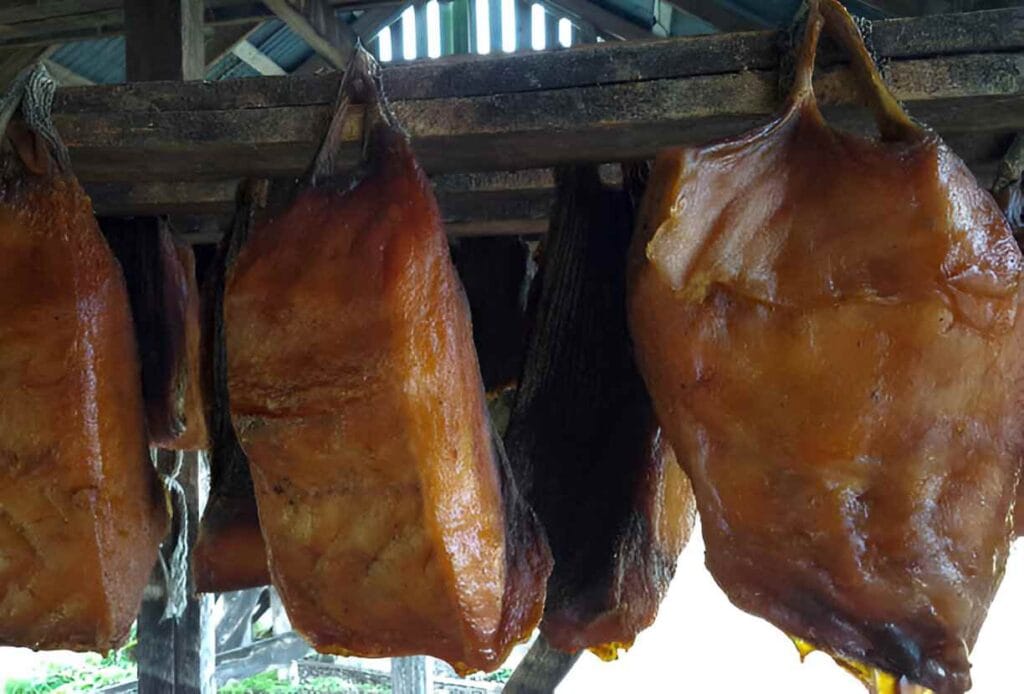
Hakarl is a traditional Icelandic dish made from a fermented Greenland shark. The shark’s flesh is toxic when fresh due to high levels of urea and trimethylamine oxide. To make it safe for consumption, the meat is buried underground for several months to ferment, then hung to dry. The result is a pungent, ammonia-rich delicacy with a strong, acquired taste. Often served in small cubes, Hakarl is a staple during Iceland’s mid-winter festival, Þorrablót. It is considered a rite of passage for adventurous eaters seeking a truly unique and historic culinary experience.
3: Casu Marzu (Sardinia, Italy)
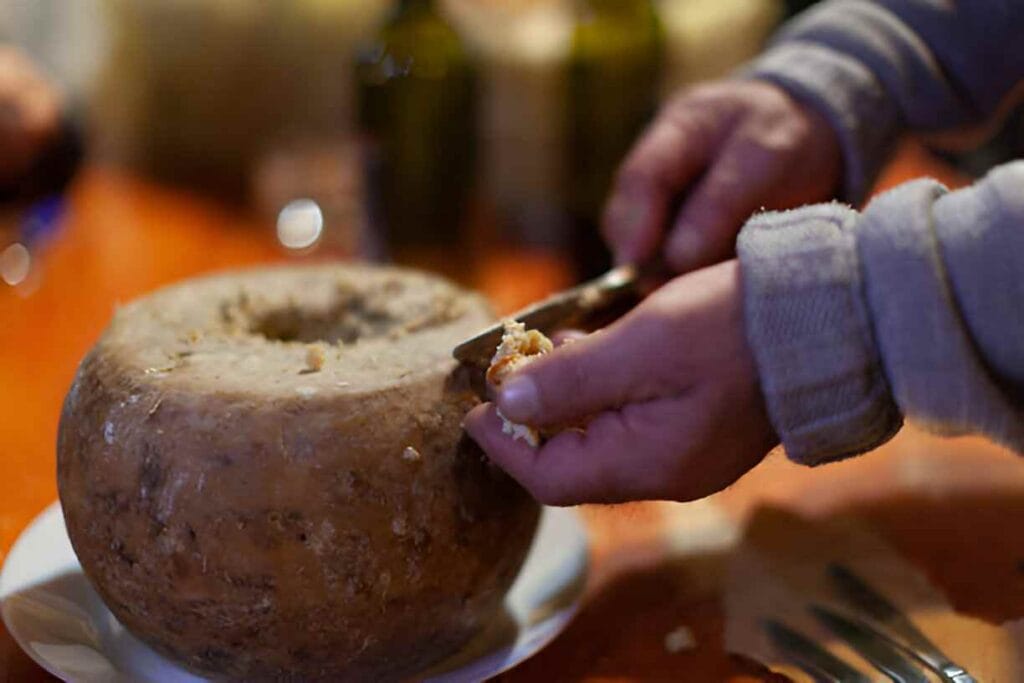
Casu Marzu, originating from Sardinia, Italy, is a sheep’s milk cheese infamous for including live insect larvae. Known as ‘rotten cheese,’ Casu Marzu is created by allowing flies to lay eggs inside the cheese, leading to fermentation as the larvae digest the fats. The result is a soft, creamy texture and a strong, tangy flavor. Though controversial and even banned in some places due to health concerns, Casu Marzu remains a cultural delicacy, with locals and daring food enthusiasts seeking out this rare and intensely flavorful cheese.
4: Escamoles (Mexico)
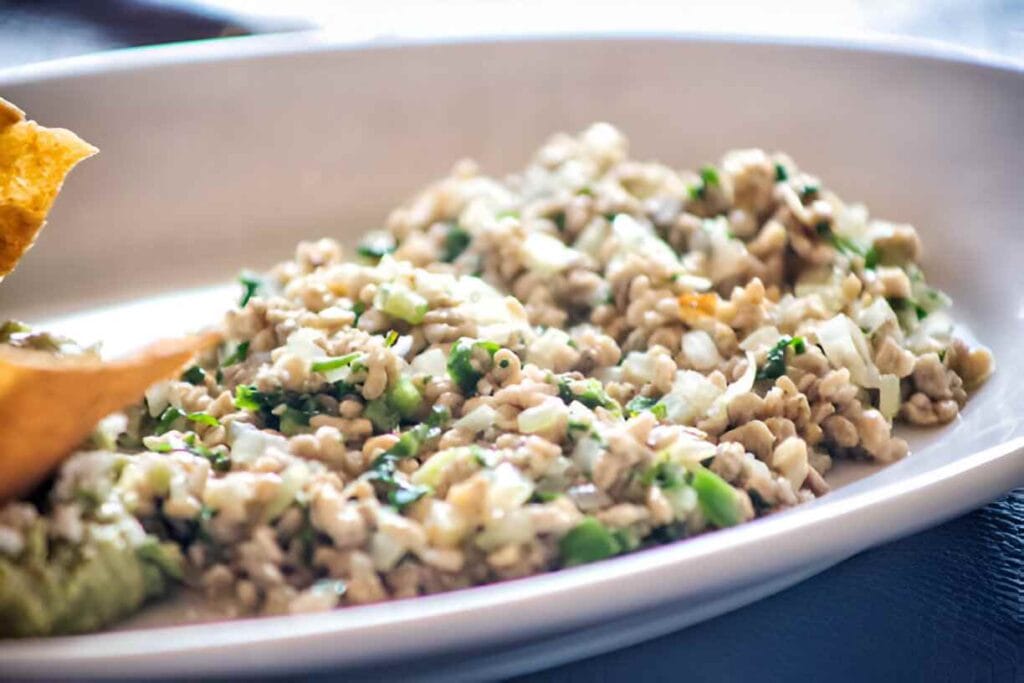
Escamoles, often referred to as ‘Mexican caviar,’ are the edible larvae of ants harvested from the roots of agave and maguey plants. Considered a delicacy in Mexican cuisine, these larvae have been consumed since the Aztecs. With a slightly nutty flavor and a texture resembling cottage cheese, escamoles are often sautéed with butter and spices or served in tacos. This unique dish is prized for its delicate taste and cultural significance, offering a taste of Mexico’s rich culinary heritage.
5: Sannakji (South Korea)
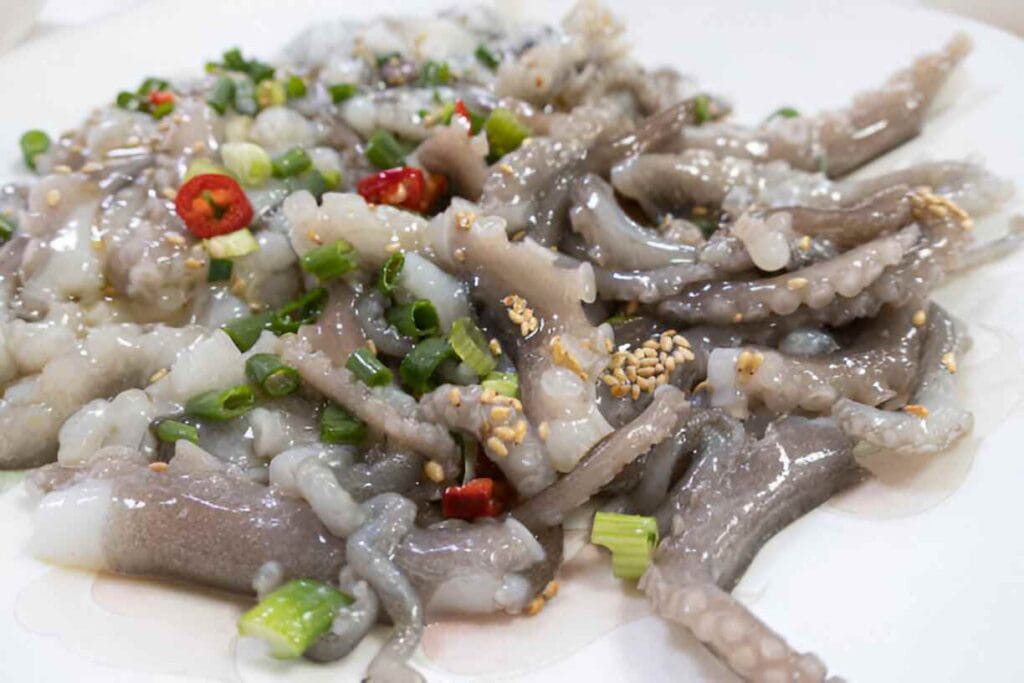
“Sannakji is a popular Korean dish featuring live octopus. The octopus is chopped into small pieces and served immediately, often still wriggling on the plate. It’s typically seasoned with sesame oil and seeds, and diners must chew thoroughly to avoid choking hazards due to the suction cups. The appeal of sannakji lies in its freshness, chewy texture, and the thrill of eating something still moving. For adventurous food lovers, this dish offers a unique dining experience and a direct connection to the vibrancy of Korean seafood cuisine.”
6: Durian (Southeast Asia)
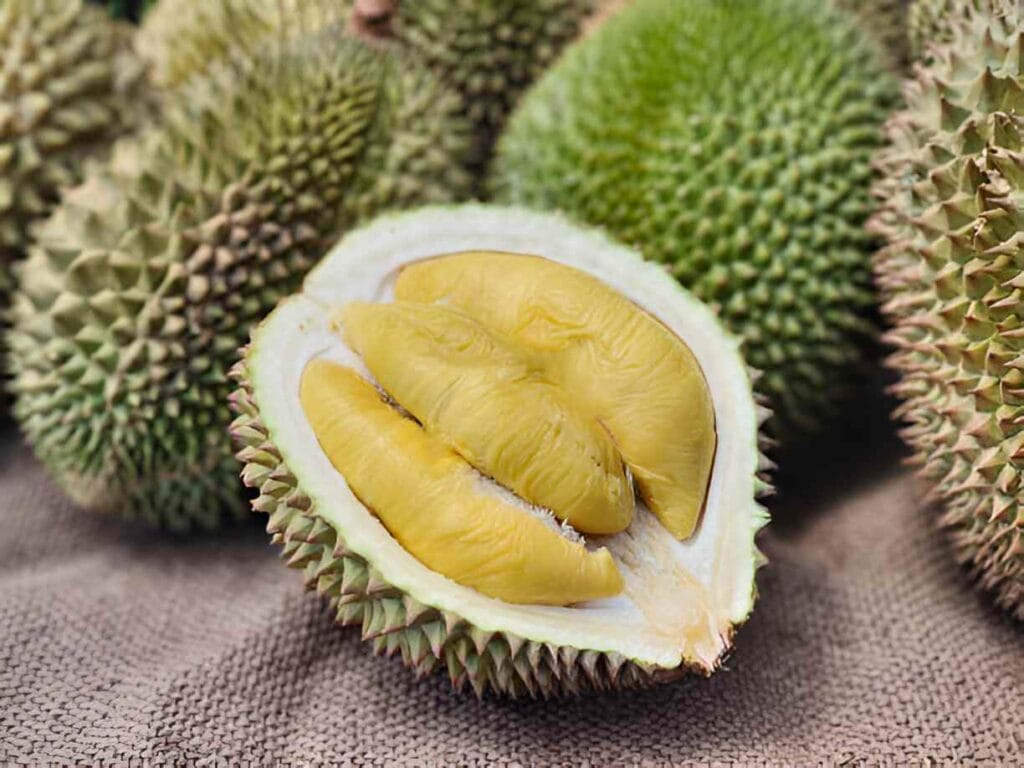
Known as the ‘king of fruits,’ durian is famous for its strong, distinctive smell, often described as a mix of onions, turpentine, and raw sewage. This spiky fruit is banned in many public places across Southeast Asia due to its pungent odor. However, those who brave its aroma are rewarded with a rich, custard-like flesh that is sweet and savory. Durian lovers cherish its complex flavor, while others are put off by its overpowering smell. Despite its divisive nature, durian remains a beloved fruit with a dedicated fanbase.
7: Black Pudding (Dried Blood)

Black pudding, a type of blood sausage, is a staple in many European cuisines, particularly in the UK and Ireland. Made from pork blood, fat, and oatmeal or barley, it is seasoned with spices and cooked until firm. Often served as part of a traditional breakfast, black pudding has a rich, earthy flavor and a dense, hearty texture. While its ingredients may be off-putting to some, it’s celebrated for its nutritional value and unique taste, making it a cherished comfort food with deep cultural roots.
8: Surströmming (Suede)

Surströmming, a Swedish delicacy, is made from fermented Baltic herring. The fish is lightly salted and left to ferment for several months, resulting in an intensely strong smell that has been compared to rotting garbage. Despite its challenging aroma, surströmming is enjoyed by those who appreciate its tangy, umami-rich flavor. Traditionally eaten with flatbread, potatoes, and onions, it is a cultural favorite in Sweden, particularly in the north, where it is often accompanied by festive gatherings and plenty of aquavit.
9: The Hundred-Year-Old Egg (China)
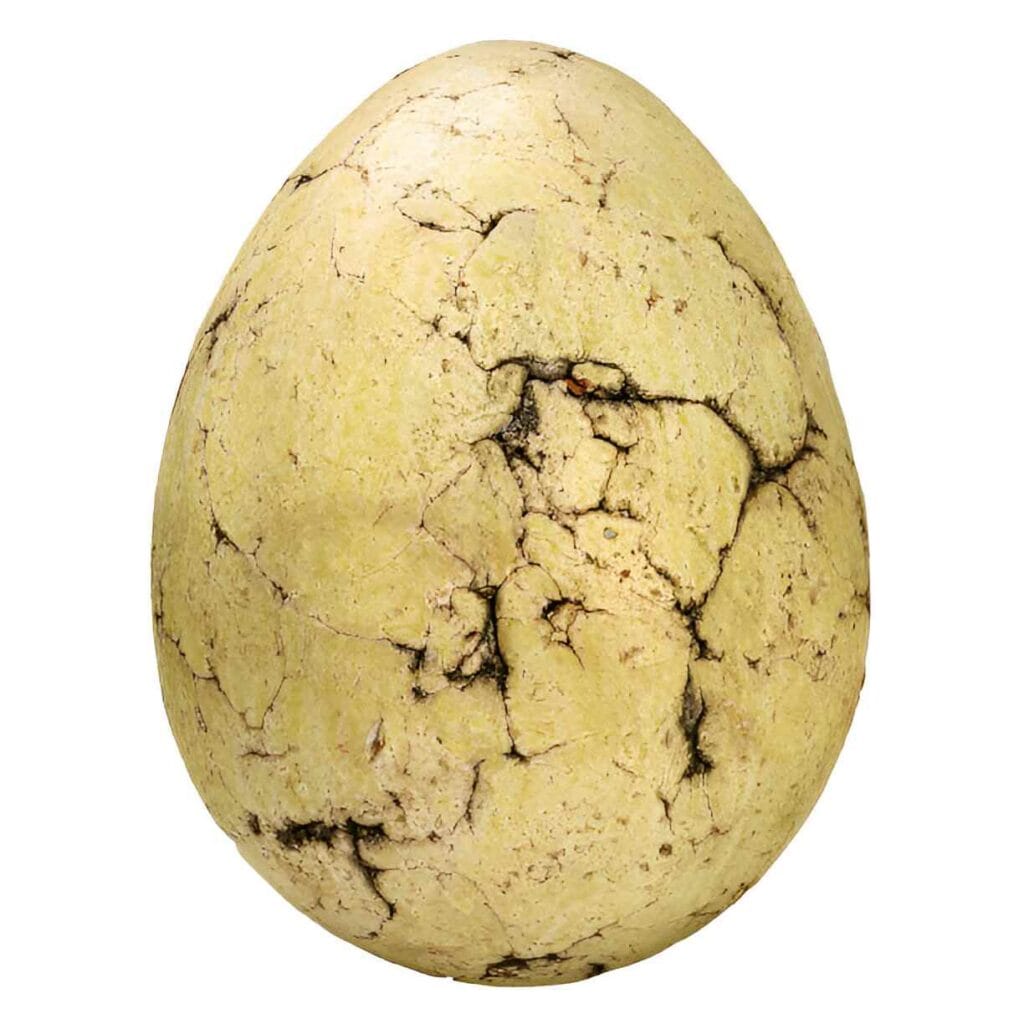
Also known as century egg, this Chinese delicacy is made by preserving duck, chicken, or quail eggs in a mixture of clay, ash, salt, and quicklime for several weeks to months. The process transforms the egg into a dark, translucent jelly with a creamy yolk, giving it a strong, distinctive flavor reminiscent of cheese or ammonia. Often served as a side dish or appetizer, the century egg is a beloved treat in Chinese cuisine, appreciated for its unique taste and historical significance.
10: Kopi Luwak (Southeast Asia)

Kopi Luwak, also known as civet coffee, is one of the most expensive coffees in the world. It is made from beans eaten, partially digested, and excreted by the Asian palm civet. The digestive process enhances the coffee’s flavor, producing a smooth, rich taste with reduced bitterness. Originating in Indonesia, Kopi Luwak has become a luxury item sought after by coffee connoisseurs. Despite its unique production method, it raises ethical concerns regarding treating civets in commercial operations.
Conclusion
Embarking to try these unique dishes offers an unforgettable culinary adventure, blending diverse cultures, flavors, and traditions. From the daring thrill of fugu and sannakji to the pungent allure of surströmming and durian, each dish tells a story of heritage and bold taste. Whether you’re sampling the rich history of black pudding or the exotic appeal of Kopi Luwak, these experiences push the boundaries of conventional dining. Embrace the challenge, expand your palate, and savor the extraordinary—these dishes are a testament to the world’s incredible and diverse culinary landscape.
Birria Tacos Recipe: A Flavorful Journey into Mexican Cuisine

